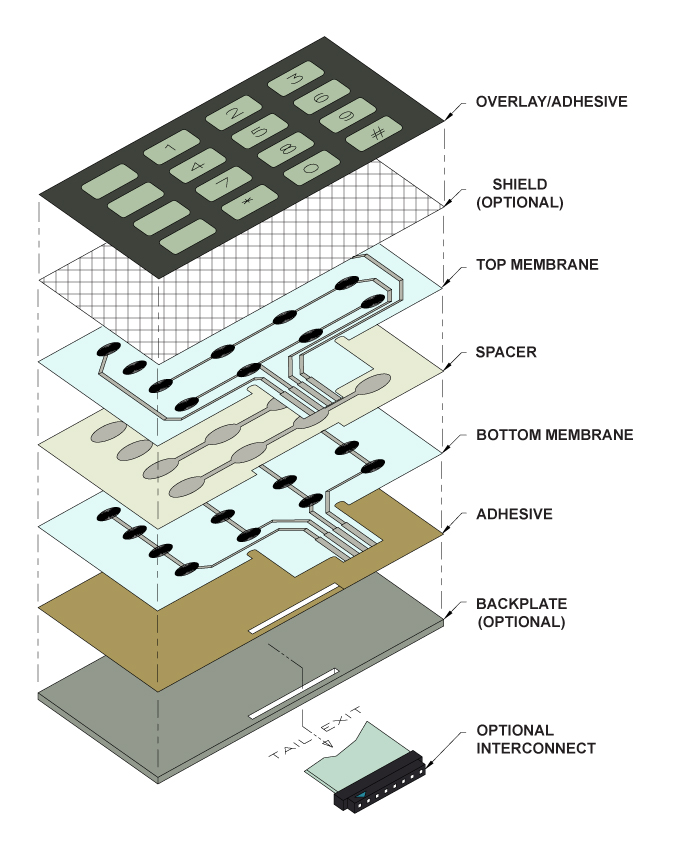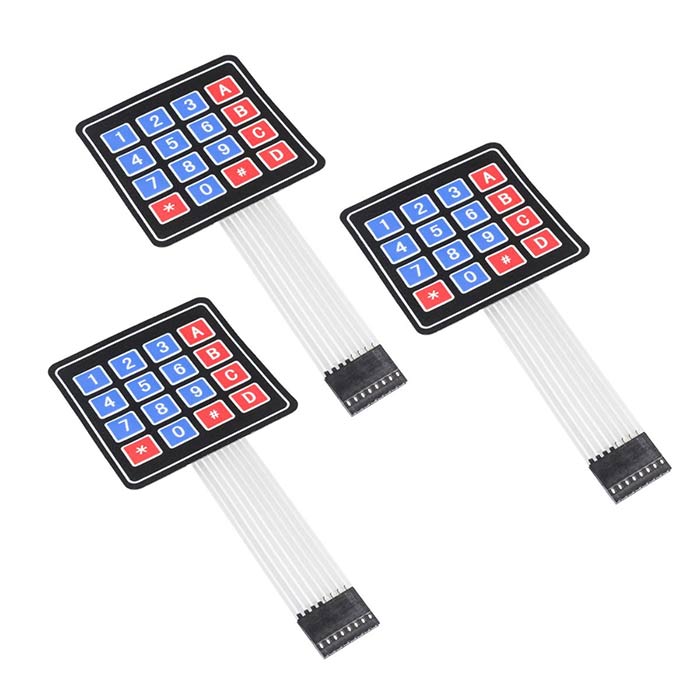Why Membrane Layer Switches Are Necessary for Sturdy Control Solution
Membrane layer buttons play an essential role in ensuring the durability and reliability of control systems across various sectors. As we discover the complex benefits of membrane buttons, it ends up being apparent that their significance transcends simple functionality, affecting user experience and operational efficiency.
Overview of Membrane Layer Buttons
Membrane layer switches are versatile and trustworthy components frequently utilized in different digital control systems. The visuals overlay supplies both useful and visual layout, while the spacer layer ensures that the switches are activated just when pushed.
Membrane layer buttons are commonly preferred in applications calling for a small and light-weight style, making them excellent for portable devices, clinical tools, and industrial machinery. They can be personalized to meet particular individual needs and can include numerous attributes such as backlighting, responsive feedback, and several shades. Membrane layer buttons are resistant to dirt, dampness, and impurities, making them appropriate for environments where durability is necessary.
Advantages of Durability
In lots of applications, the sturdiness of membrane switches deals significant advantages that enhance their overall efficiency and dependability. These buttons are developed to hold up against harsh environments, making them excellent for use popular problems such as high humidity, extreme temperatures, and direct exposure to chemicals. Their robust construction assists to stop damages from physical effect, guaranteeing durable capability and lessening the need for regular substitutes.
In addition, membrane layer switches are resistant to deterioration, which is essential in applications where regular communication takes place. This toughness converts to reduce maintenance expenses, as organizations profit from lowered downtime and less solution disturbances. The encapsulated layout of membrane switches over protects interior parts from dirt and dampness ingress, more contributing to their life expectancy (membrane switch).
One more advantage is their ability to keep consistent efficiency in time. With a high tolerance for mechanical stress and anxiety, these switches protect their responsive responses and electrical honesty, guaranteeing user fulfillment. Ultimately, the resilience of membrane changes not only boosts operational effectiveness yet additionally cultivates self-confidence in their reliability, making them a favored option for control systems throughout numerous markets.
Applications in Numerous Industries
Durable control systems using membrane buttons discover extensive applications across a series of markets, each gaining from the unique attributes these buttons offer. In the clinical sector, membrane layer buttons are essential for devices such as patient monitors and analysis tools, where integrity and simplicity of cleaning are extremely important. Their resistance to dampness and impurities guarantees they maintain performance in sterile environments.
The auto sector leverages membrane buttons for dashboard controls and infotainment systems, where they offer smooth, inconspicuous interfaces that enhance individual experience. These switches are also developed to withstand severe conditions, consisting of direct exposure to extreme temperatures and resonances.
In commercial settings, membrane buttons are click here for more generally utilized in machinery control panels, offering responsive comments and resilience necessary for high-usage applications. Their capability to resist chemicals makes them appropriate for making atmospheres where spills and impurities are frequent.

Consumer electronics, such as cooking area home appliances and remotes, also make use of membrane layer buttons for their convenience and cost-effectiveness. On the whole, the adaptability and durable nature of membrane switches over make them essential throughout numerous industries, making certain reliable procedure and long life in control systems.
Layout and Visual Appeal
While performance is critical, the design and aesthetic charm of control systems geared up with membrane layer buttons play an essential function in user interaction and general experience (membrane switch). The visual layout of these switches can considerably affect individual assumption and communication. A well-designed membrane button improves the attractiveness of the gadget, making it more enticing to customers and fostering a link in between the customer and the item
Membrane layer switches use a lot of flexibility in layout, enabling manufacturers to customize graphics, shades, and structures to straighten with brand identification and item looks. The use of vibrant colors and distinct patterns can attract focus, while tactile feedback can enhance the individual's communication with the device. Additionally, the ability to incorporate LED signs and backlighting right into the membrane layer button layout offers both functional and visual benefits, enhancing exposure and functionality in various atmospheres.

Enhancing Individual Experience

Furthermore, membrane layer switches can be tailored to incorporate graphical interfaces, enhancing usability by offering information in a clear and intuitive manner (membrane switch). This customization look here can consist of symbols, labels, and shade coding that guide customers through facility functionalities with ease. Furthermore, their convenience enables combination in various environments, making sure constant efficiency whether in commercial equipment or customer electronic devices
The durability of membrane buttons additionally plays an important role in customer experience. By enduring rough conditions and prolonged usage, these switches decrease the possibility of system failures, thus advertising dependability and customer confidence. Inevitably, the strategic use membrane switches over not only boosts functionality but likewise substantially enriches customer interaction with control systems, making them an important element in modern-day style.